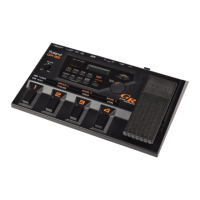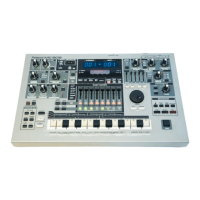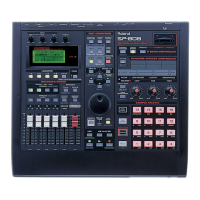To Add Effects ..............................................................................49
To Switch Effects (EXP PEDAL).................................................49
Chapter 8: The Arpeggiator Function
About Arpeggiator ..........................................51
“Arpeggio Patterns” ....................................................................51
Arpeggiator Application Examples ..................52
Reproducing Arpeggios From Guitars and
Other Instruments..........................................................52
Techno (Dance) Arpeggios .........................................................52
Reproducing Tremolo Effects.....................................................52
Other Ways to Use Arpeggiator.................................................52
Effective Use of the Hold Function During
Arpeggios .........53
Changing the Sounding of Arpeggios...............55
Turning Arpeggiator On and Off ..............................................55
Selecting Tones to Be Arpeggiated
(ARPEGGIO SEL)...........................................................55
Setting Tempo and Synching Tempo to
the External Device (A-TEMPO)..................................56
Tap Tempo ....................................................................................57
Adjusting Sound Length (A-DURATION)...............................57
Selecting Notes and Rhythm (A-RHYTHM)............................58
Copying Other Patch Arpeggio Patterns...........59
Creating an Arpeggio Pattern..........................60
Programming One Note at a Time:
The “Step” Method........................................................60
The Feel of Tape Recording: The “Real Time” Method..........61
Inputting with a Computer or Sequencer.................................62
What to do If You Have Difficulty Producing Patterns .........63
Chapter 9: Adding Harmonies in a
Specific Key (The Synth Harmonist)
About the Harmonist .......................................64
What You Can Do with the Harmonist .............65
Adding Synth Sounds to Guitar Sounds ..................................65
Creating Harmonies with Two Synth Sounds.........................65
Operation .......................................................65
Turning the Harmonist On and Off ..........................................65
Selecting Harmony Tones (harmony SEL) ...............................66
Setting Harmonic Intervals (h-style) .........................................66
Setting Transpose and “h-style” ................................................67
Setting the Key (h-key)................................................................68
Changing the Key from External Pedal or Other Device with
MIDI Note Messages (h-remote) .................................69
Switching Between Major and
Minor During a Performance.......................................69
Chapter 10: Connecting to External
Sound Generators and Sequencers
About MIDI......................................................70
(MIDI)
Controlling an External MIDI Sound Device ......70
Connecting to an External MIDI Sound Device ......................70
The Flow of a MIDI Messages, and Necessary Settings
(CHANNEL, BEND RANGE)......................................71
Transmitting in Mono Mode or Poly Mode .............................72
Changing Patch and Other Parameters by Transmitting
MIDI Messages from the GR-30 (PG CHNG #).........72
When You Want to Have Separate Sounds
Programmed for Different Strings...............................73
Selection of More Than 128 Tones
(MIDI BANK SELECT)..................................................73
How to Apply the Arpeggiator or
Harmonist Using an External Sound Device .............75
The Relationship Between Envelope Follow Function and
MIDI Message.................................................................75
About Pedal Control for External MIDI Devices.....................75
Transposing Performance Data for an External
Sound Generator (TRANSPOSE).....76
What to do if an External Module Doesn’t
Produce Sound as Expected......76
Using the GR-30 as an External Sequencer
Input Tool.........77
Connecting to a Sequencer..........................................................77
Input Procedures and Settings for Each Device ......................77
About “Local Control Off” .........................................................78
Creating Realistic Plucked String
Instrument Sounds (Data) ............................................78
How to Record Arpeggiator and
Harmonist Performances ..............................................78
Reducing the Size of a MIDI Pitch Bend Message...................79
Practical Use of MIDI Channels.................................................80
What to do When You Have Difficulty
Sequencing ...........80
Chapter 11: Other Convenient
Functions
Restoring the Settings to Their Defaults
(Initializing)................81
Recordering the Program Change Numbers
from the Beginning ........................................................81
Using the GR-30 as an Expansion Sound Device
for Keyboards or other MIDI Devices
(Poly Mode Reception).....82
Using the GR-30 with a Number of Guitars
(GUITAR SELECT) ..........82
Terminating Transmission of the MIDI Controller
No. 7 (Volume)...........83
Terminating Transmission of the Bend Range
Request Message .......84
Chapter 12: Appendices
Troubleshooting ..............................................85
Specifications ..................................................89
Roland Exclusive Messages .............................90
MIDI Implementation .......................................92
MIDI Implementation Chart..............................98
Parameter List (Blank Chart)............................99
Index (
WORDS/PANEL PRINT
) ..............................100
Tone List........................................................104
Information...................................................106
Preset Patch List ............................................108
5
1
2
3
4
5
6
7
8
9
10
11
12

